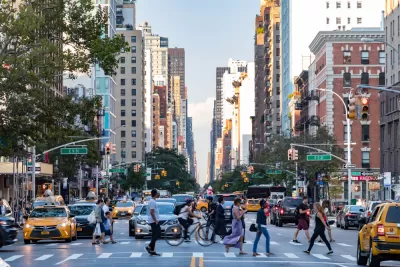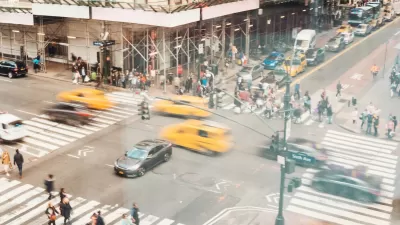U.S. traffic fatalities hit a twenty-year peak in the first quarter of 2022.

The first quarter of 2022 saw the highest number of traffic deaths in two decades, reports Daniel C. Vock for Route Fifty. Dashing hopes that the trend of rising fatalities would slow as the risky behaviors exacerbated by the pandemic subsided, data show that 9,540 people died on U.S. roads between January and March of 2022.
The trend isn’t uniform across the country. “The highest increases came in the mid-Atlantic region, which saw a 52% jump in deaths,” while road deaths in the far western states, the only region to see a decrease, declined by 11 percent.
According to Vock, “Safety advocates are growing increasingly frustrated that the issue has not sparked more concern – or at least a new approach – among policymakers at the federal, state and local levels.” Critics of the National Highway Traffic Safety Administration (NHTSA) say the federal agency could do more by regulating vehicle design to avoid blind spots, reining in Tesla and other carmakers who disingenuously promote autonomous features that lead to unsafe driving, and adjusting vehicle safety tests to include pedestrians and other people outside the car.
While many safety efforts focus on driver behavior, some advocates say the government should take a stronger role in regulating the vehicles and infrastructure that can help keep people safe by applying a ‘safe systems’ approach. As Jessie Singer points out in her book of the same name, “there are no accidents.” To protect citizens, the government can, as Singer puts it, “Apply a harm-reduction model to every corner of the built environment.”
FULL STORY: US Road Fatalities Soared in Early 2022

Maui's Vacation Rental Debate Turns Ugly
Verbal attacks, misinformation campaigns and fistfights plague a high-stakes debate to convert thousands of vacation rentals into long-term housing.

Planetizen Federal Action Tracker
A weekly monitor of how Trump’s orders and actions are impacting planners and planning in America.

Chicago’s Ghost Rails
Just beneath the surface of the modern city lie the remnants of its expansive early 20th-century streetcar system.

Bend, Oregon Zoning Reforms Prioritize Small-Scale Housing
The city altered its zoning code to allow multi-family housing and eliminated parking mandates citywide.

Amtrak Cutting Jobs, Funding to High-Speed Rail
The agency plans to cut 10 percent of its workforce and has confirmed it will not fund new high-speed rail projects.

LA Denies Basic Services to Unhoused Residents
The city has repeatedly failed to respond to requests for trash pickup at encampment sites, and eliminated a program that provided mobile showers and toilets.
Urban Design for Planners 1: Software Tools
This six-course series explores essential urban design concepts using open source software and equips planners with the tools they need to participate fully in the urban design process.
Planning for Universal Design
Learn the tools for implementing Universal Design in planning regulations.
planning NEXT
Appalachian Highlands Housing Partners
Mpact (founded as Rail~Volution)
City of Camden Redevelopment Agency
City of Astoria
City of Portland
City of Laramie





























